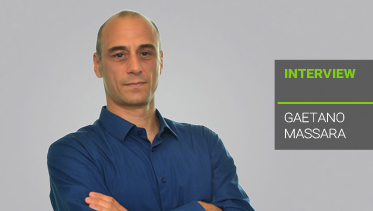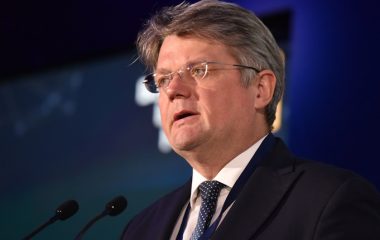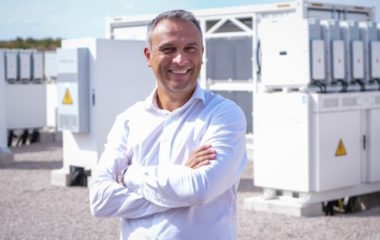
No country of this region can hope for a prosperous future without closer cooperation with its neighbours and Europe. Gaetano Massara, CEO of GE South East Europe, the world’s leading infrastructure technology provider, who is covering 11 countries of the region from his Belgrade and Zagreb offices, told Balkan Green Energy News that looking at conditions for investing in renewable energy projects country by country, Montenegro’s regulatory model is good, as it provides adequate guarantees and security to investors, and at the same time not exposing itself to over commitments.
„Governments usually have this concern: they don’t want to overcommit and then be faced with a situation where they have to make retroactive or drastic changes. But the case of Serbia is different,” claims the global infrastructure technology provider’s official. The country is in a different phase of the investment cycle as it has still to start the implementation of sizable renewable energy projects, and incentives are needed to attract investments, he said. Additionally, the level of the feed-in tariff for wind energy is a good compromise, as it is not too high and not too low, Massara added. Also, in setting a wind quota of 500 MW the Serbian government made a prudent choice; this choice will protect Serbian energy bill payers, he stressed.
Recently you said clear legislation was necessary for investors to kick-start serious projects in Serbia. What would the first steps be?
The first step would be the adoption of a bankable secondary legislation needed to kick-start renewable energy projects in Serbia. If the regulation for wind energy, for instance, is not adopted very quickly, approximately EUR 1 billion of investment is at risk.
Two-and- a-half years have passed since the incentive scheme has been adopted in Serbia.
Two-and-a-half years have passed already since the incentive scheme has been adopted. No significant progress has been made with the exception of the adoption of the energy law last December. Many investors are starting to feel deal fatigue. They’ve already invested significantly in projects preparation.
What kind of regulation is the most important?
We are referring firstly to the Power Purchase Agreement, which is the template contract between the developers of wind farms and the offtaker of electricity, which in the case of Serbia is EPS. But also the Decree on the Preferred Power Producer status and the Decree on Incentive Measures are still missing.
How do wind power plants affect the market and the society?
The case of Serbia can be a perfect example of how wind power plants can contribute to economic growth and social development. According to our estimations, the construction and operation of wind farms equivalent to the current wind energy quota of 500MW can generate a net economic benefit for Serbia in the region of EUR 400 million over the 25 years of operation of the wind farms. This net economic benefit would arise from the use of Serbian companies and equipment during construction and maintenance of the power plants, as well as from the tax revenues collected by both the State and the local administrations. These taxes can be used for other needed investments in Serbia to boost its economy. Serbian workforce would be used for the construction of the wind farms but also for the maintenance during the 25 years of their operation, including field service engineers.
If the regulation for wind energy in Serbia is not adopted very quickly, approximately EUR 1 billion of investment is at risk.
Then we should consider also compliance with European Union regulation. Serbia is a signatory country of the EU Energy Treaty. It undertook the obligation to meet at least 27% of its energy needs from the use of renewable energy sources by 2020. The wind energy quota of 500 MW is part of this strategy. If Serbia does not build these 500MW of wind energy, it will have to import it thus further deteriorating its energy deficit and balance of payments. Missing the 2020 deadline would also imply for Serbia being in breach of its commitment with the EU. Meeting this obligation is part of the country’s overall commitment to join the EU and to abide by its regulations.
You’re responsible for GE’s strategy for Southeastern Europe. What kind of political course for the countries under your responsibility do you consider favourable?
We are business people, not politicians. On the other hand I am based in the region. Nevertheless, when a big corporation like GE decides to operate in a country, this has a positive impact through transfer of technology and best business practises.. South East Europe can be appealing only if seen as one market, considered an integral part of Europe. No country of the region can hope in a prosperous future without thinking of a closer cooperation with its neighbours and Europe.
Which Western Balkans countries offer good regulation and investment protection mechanism for renewables?
All the countries have pros and cons. From the perspective of regulation, we see that Montenegro’s regulatory model is a good one, providing adequate guarantees and security to investors while at the same time not exposing the country to over-commitments. Governments usually have this concern: they don’t want to over-commit and then be faced with a situation where they have to make retroactive or drastic changes. There are other countries from the region often cited in this respect.
But the case of Serbia is different. Firstly, Serbia is in a different phase of the investment cycle as it has still to start the implementation of sizable renewable energy projects and incentives are needed to attract investments. Secondly, the current level of the Feed-in Tariff for wind energy is a good compromise, as it is not too high and not too low. Thirdly, in setting a wind quota of 500MW the Serbian government made a prudent choice; this choice will protect Serbian energy bill payers. In all these policy choices, the Serbian government has operated very well.
What about the ambiance for ESCO projects? How did the model develop and improve?
GE supports ESCO models because we believe it is a clever way to promote investments in energy efficiency through a broader involvement of the private sector. We believe that with implementation of this kind of projects and public-private partnership schemes, the need for a reasonable return on investment and the need for social infrastructure are simultaneously met.
The degree of development of supporting regulatory framework as well as of projects track record varies from country to country. Slovenia is the most advanced, followed by Croatia. In both countries we see tenders for public lighting under ESCO models.
As you may know, the European Bank for Reconstruction and Development has established a facility for public lighting projects under ESCO. We are cooperating with ESCO partners in the region with the aim to participate, targeting Slovenia, Croatia and Serbia.
Also PPP projects in the healthcare sector are expected soon. We encourage these models as they allow the development of much-needed infrastructure without creating a burden on State budgets.
Except from medical equipment, what other technology does GE have for those hospitals?
We can offer a full package of solutions for hospitals from medical equipment to power generation units, energy smart grid and efficient lighting solutions. The Serbian clinical center of Belgrade is an example, where our gas engines supply heat and power for the hospital and our medical equipment scans and diagnoses patients every day. All this is facilitated through competitive financing, thanks to our access to commercial banks, export credit agencies and international finance institutions.
What are the business models that GE aims for in wind power plants in the Balkans? Does the company develop its own projects?
As far as wind energy is concerned, GE is the world leader in developing and manufacturing wind energy technology. Our goal is to sell our technology. Typically GE does not invest in wind farms, but in certain instances we may decide to invest limited amount of capital in order to mitigate the overall project risk through GE’s ‘skin in the game’ and help sponsors attract additional finance providers. These are exceptions.
Does GE see any opportunities in investing in power storage here? What kind of technology does your company offer?
We believe that power storage is one of emerging mainstreams that will accompany energy industry for the next decades. With the boom of renewable energy, from a technical standpoint, there are new challenges. Power storage is one of the ways through which to address these challenges. Hydro pump storage systems, for example, are typically large facilities that need big investments and availability of hydro resources to physically store power. Batteries for electrochemical storage are clearly more easily manageable, and can be a better fit for smaller applications. Both types of power storage technologies can be used for ‘peak shaving’. This consists in storing power when supply is greater than demand and inject the stored power into the grid when demand is greater than supply.
Over the past four years there have been large investments in the improvement of power storage technologies. GE has been at the forefront of this trend. This has resulted in a drop in the cost of power storage technology and energy unit cost.
Just few days ago an important customer of ours confirmed to me how power storage can be the solution to address the need for ‘peak shaving’ resulting not only from the imbalance to the grid created by renewable energy but also to complement inflexible base-load power generation. This is the case of many countries of the region, where there are many coal-fired thermal power plants with low flexibility.
Therefore, energy storage should be part of a balanced energy mix, based on multiple solutions and sources.
In June you held the GE Sourcing Day at the building of the National Assembly of Serbia. How is the process of selecting suppliers developing, after a number of companies qualified for the second round?
The idea is to identify more Serbian suppliers for the GE businesses. We have factories in Europe and around the world that source components and parts from thousands of suppliers. Becoming a qualified supplier of GE means to have the possibility to use GE as a gate to have access to the world market.
We run a constant review of our suppliers. This review is based on quality, reliability and competitiveness. My challenge and task is to connect the region to the GE supply chain.
At the GE Sourcing Day we have invited more than one hundred Serbian companies. We shortlisted around 30 of them, but we are still receiving applications from other companies. We foresee the process to take between six months and one year: after a first technical assessment of the fit with GE products and needs, typically we invite the shortlisted company to visits GE site and to submit a quotation for the production of a defined component or part. If the company passes this phase there is a due diligence on their integrity and compliance, which is of paramount importance to us, and then on financial capability and reliability. We want our suppliers to be reliable and capable to meet our demands at any time on a very short notice. Please read more about how GE and Central Eastern Europe can grow together on geforcee.geblogs.com.








